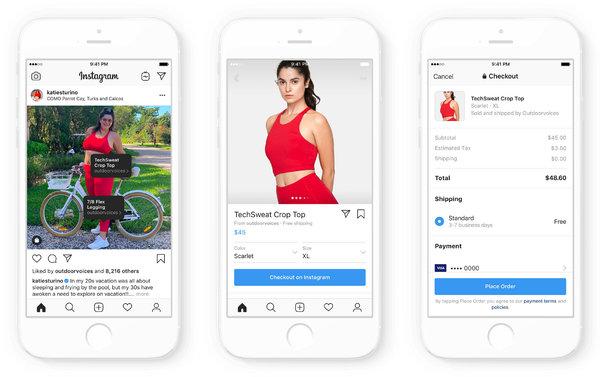
As part of a new initiative, selected influencers, like Katie Sturino, a body-positive entrepreneur, will be able to partner with brands to create posts that can be shopped without ever leaving the platform.
For Negin Mirsalehi, a 30-year-old beauty guru, life, business and Instagram are inseparably intertwined. Ms. Mirsalehi, a fetching Dutchwoman who built a hair-care brand on the hives of her father’s apiary outside Amsterdam, is an entrepreneur, but the sort of entrepreneur whose looks, love and workout routines are shared daily on Instagram with 5.3 million fans. Ms. Mirsalehi is an influencer.
Instagram recognizes the power of those influencers — and “super-influencers,” as Eva Chen, its director of fashion partnerships, called stars like Ms. Mirsalehi (though she acknowledged there is no precise minimum for that particular title).
The platform, with revenues that are still largely generated by advertising, has recognized the opportunity that in-app shopping presents. In March, it announced that it would begin testing in-app shopping with about 20 retail partners, including Zara, H&M, Dior, Oscar de la Renta and Nike. Now it is allowing those brands to partner with what it calls content creators (influencers, yes, but also established media companies like Vogue, Elle and GQ) to extend the in-app shopping function — what Instagram calls Checkout — from a brand’s own feeds to those of its chosen influencers.
For Ms. Mirsalehi, who is partnering with Oscar de la Renta to create shoppable posts on her feed, the new function will help bring her community even closer to her. She will field followers’ questions about the outfits she posts daily, she said on a video chat from Amsterdam, in “DMs, comments underneath photos, whenever I see them outside.”
“They really want to know the entire lifestyle,” she said. “It’s about where are you, what are you wearing, what do you believe in, what do you support?”
For Oscar de la Renta, she’ll be supporting the Nolo bag, a new purse style. “This is not something where we’re expecting to materially influence the sales of that product, though one always hopes,” Alex Bolen, the chief executive of Oscar de la Renta, said. “We’re hoping to learn and bring what we learn to larger projects.”
Oscar de la Renta was earlier than many luxury brands to experiment with Instagram, and Mr. Bolen said that those experiments have enabled the label to better compete against bigger players. Ms. Mirsalehi will be the first of a handful of influencers and accounts it is partnering with in this program; Chriselle Lim, Elle magazine and Laura Kim, Oscar’s own creative director, will be others.
“An important part of this is really data,” Mr. Bolen said. “We get lots of new information. What we’re doing with it is what we’re still, to be honest, trying to figure out.”
For the initial rollout, 55 accounts are working with the 23 brands already using Checkout to test shoppable posts. They include celebrities whose followers number among the platform’s highest, like Kim Kardashian West, Kylie Jenner and Gigi Hadid; influencers who already command audiences bigger than most magazines, like Ms. Mirsalehi and Chiara Ferragni; and more boutique creators like Kimberly Drew and Katie Sturino.
The development underscores the growing awareness that Instagram’s power users are increasingly using the platform to develop not only stand-alone brands, like Ms. Mirsalehi’s hair-care line, but also personal brands they can leverage in sponsorship and endorsement deals for fun and profit. (In Ms. Mirsalehi’s case, she already has a business relationship with Oscar de la Renta, as well as with Dior and Revolve for sponsored content.) Making content that is immediately and seamlessly shoppable — a move from spokeswoman to saleswoman, in a sense — is only the next step.
“A lot of these conversations were happening offline between creators and brands already,” said Ms. Chen, who added that Instagram was not involved in the financial negotiations between the brands and their influencers. “That will continue to be the case.”
At present, Instagram does not receive a commission on sales made through the Checkout program; it does assess a fee for the brands that use the service (with or without influencers), which Ms. Chen said goes to covering credit card processing fees.
The very real business considerations of influence have made moguls of users whose public-facing personas are often more about fun and frolic than consumer marketing.
“We never try to see them as a number,” Ms. Mirsalehi said about her followers. “These are real people we’re talking about.” With the shoppable posts, she said, “I’m going to be able to get to know my audience even more. Which outfits do they really like more?”
That said, she added, with the savvy of a seasoned marketing executive, “There’s only one term we’re hearing nowadays, and that’s ‘conversion.’ So what is converting and what is not? These kinds of statistics are going to provide us with a lot of information that I’m really curious to dive into.”








